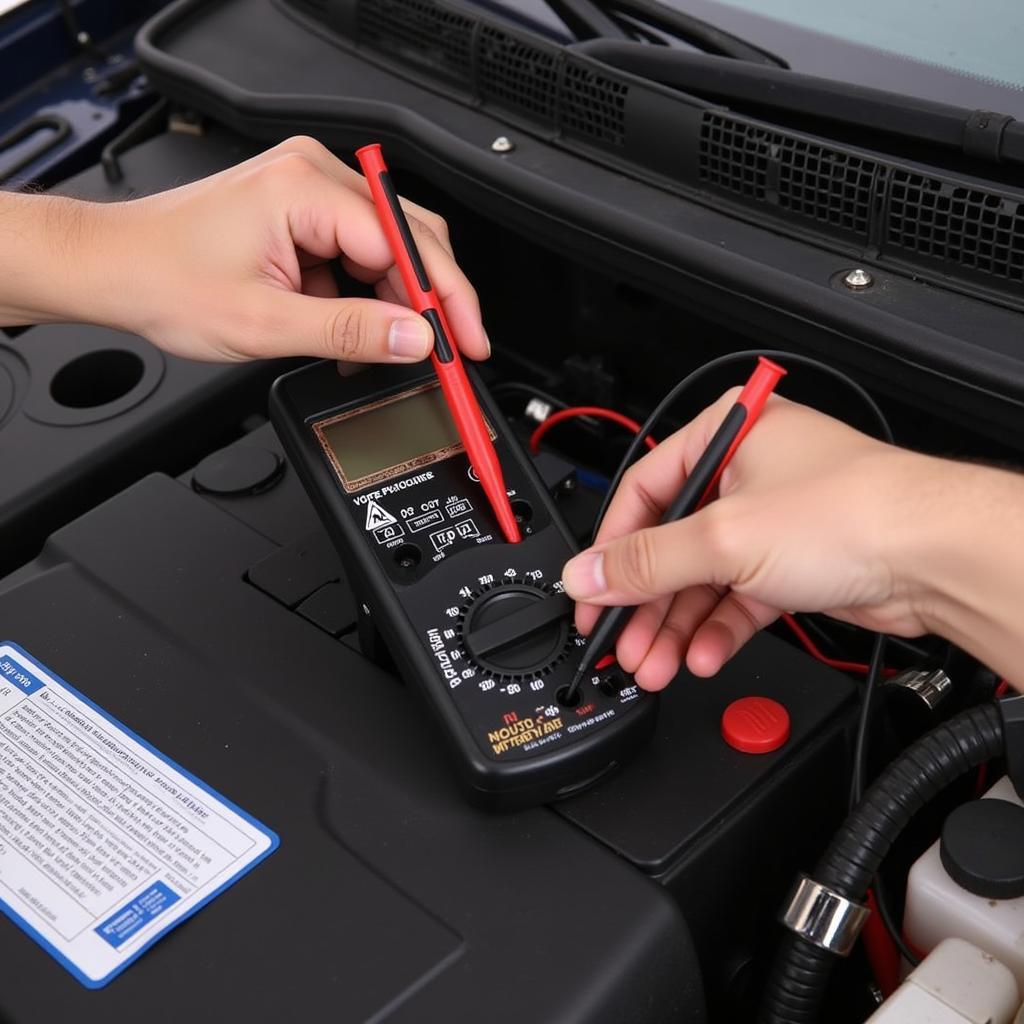You’ve replaced your fuel pump, expecting your car to roar back to life, but it’s still stubbornly refusing to start. This is a frustrating situation, and you’re likely wondering what could be wrong. Don’t worry, you’re not alone. This problem is more common than you think, and there are several reasons why your car might still be unresponsive after a fuel pump change. This guide will walk you through the most likely culprits and help you get back on the road.
Why Your Car Might Not Start After a Fuel Pump Replacement
Changing the fuel pump is often seen as the solution to fuel delivery problems, but sometimes the issue lies elsewhere. Even a brand new fuel pump won’t help if other components are malfunctioning. Let’s explore some of the common reasons your car won’t start after a fuel pump replacement.
Checking the Fuses and Relays
One of the first things you should check are the fuses and relays related to the fuel system. A blown fuse or a faulty relay can interrupt the power supply to the fuel pump, rendering it useless even if it’s brand new. Locate the fuel pump fuse and relay in your car’s fuse box (consult your owner’s manual for the exact location). Inspect the fuse for a broken filament and test the relay for proper function.
Is the Fuel Pump Primed Correctly?
After installing a new fuel pump, it needs to be primed. Priming the fuel pump involves filling the fuel lines and the pump itself with fuel. Without proper priming, the pump might struggle to draw fuel from the tank, leading to starting problems. Consult your vehicle’s repair manual for the specific priming procedure for your make and model.
Examining the Fuel Pump Wiring and Connectors
A damaged wire or a loose connector can prevent the fuel pump from receiving power or sending the correct signals. Carefully inspect the wiring harness and connectors for any signs of damage, corrosion, or loose connections. A bad connection can prevent the fuel pump from working, even if it’s new.
Could it be a Clogged Fuel Filter?
A clogged fuel filter restricts fuel flow to the engine, preventing it from starting. Even if you have a new fuel pump, a clogged filter will starve the engine of fuel. Consider replacing the fuel filter, especially if it’s old or you suspect it’s clogged.
Other Potential Issues: Security System, Ignition System, and Crankshaft Position Sensor
Sometimes, the problem isn’t related to the fuel system at all. A malfunctioning security system can prevent the engine from starting. Similarly, issues with the ignition system, such as a bad ignition coil or spark plugs, can also prevent the car from starting. Another possibility is a faulty crankshaft position sensor, which tells the engine control unit (ECU) the position of the crankshaft. A bad sensor can prevent the ECU from injecting fuel and firing the spark plugs.
“A common oversight is neglecting the crankshaft position sensor,” says John Miller, ASE Certified Master Technician. “It plays a vital role in engine timing and can prevent starting even with a new fuel pump.”
Conclusion
Changing the fuel pump and still having a car that won’t start can be perplexing, but by systematically checking the related components and following the troubleshooting steps outlined above, you can pinpoint the real culprit and get your car running smoothly again. Remember to check fuses, relays, wiring, and the fuel filter. If these are all good, consider other potential issues like the security system, ignition system, or crankshaft position sensor.
“Don’t jump to conclusions,” advises Sarah Chen, Automotive Engineer. “A methodical approach is crucial when diagnosing car problems. Checking the basics first can often save you time and money.”
FAQ
- Q: I changed my fuel pump and car still won’t start. What should I do first? A: Check the fuel pump fuse and relay, then ensure the pump is primed correctly.
- Q: Could a bad fuel filter prevent my car from starting even with a new fuel pump? A: Yes, a clogged fuel filter restricts fuel flow, regardless of the fuel pump’s condition.
- Q: How do I know if my fuel pump relay is bad? A: You can test it with a multimeter or swap it with a known good relay.
- Q: What other components can prevent a car from starting after a fuel pump change? A: The security system, ignition system, and crankshaft position sensor are potential culprits.
- Q: How do I prime a fuel pump? A: Consult your vehicle’s repair manual for the specific priming procedure.
- Q: What if I’ve checked everything and my car still won’t start? A: It’s best to consult a qualified mechanic for further diagnosis.
- Q: Can a bad crankshaft position sensor prevent my car from starting after changing the fuel pump? A: Yes, the crankshaft position sensor is vital for engine timing and can prevent starting even with a new fuel pump.

